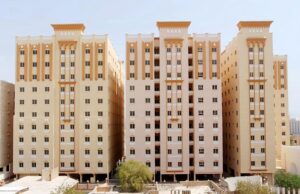
St Albans Property Price Trends: A Comprehensive Analysis of the Last Decade
| In the ever-evolving landscape of the UK real estate market, St Albans has consistently stood out as a prime location for homeowners and investors alike. With its rich history, excellent schools, and superb transport links to London, it’s no wonder that this Hertfordshire gem has been a sought-after destination for many according to St Albans estate agents. In this blog, we will delve deep into the property price trends of St Albans over the past decade, providing valuable insights for anyone interested in this dynamic market.
A Decade of GrowthSt Albans has seen remarkable growth in property prices over the last ten years. A combination of factors has contributed to this, making it an attractive proposition for both buyers and sellers. Demand and DesirabilitySt Albans’ enduring appeal lies in its enviable position just 20 miles north of London, which increases the enquiries for properties for sale in St Albans as each day passes by. Commuters appreciate the efficient train links to London’s St Pancras International station, which can get you to the heart of the capital in less than half an hour. The lure of a quieter, more spacious living environment while maintaining easy access to the city has only grown stronger over the years. The city’s reputation as a hub for high-quality education has also driven demand. With several outstanding primary and secondary schools, St Albans has long been a magnet for families seeking the best educational opportunities for their children. Limited SupplySt Albans’ historical charm and strict planning regulations have kept property development relatively restrained. This has led to limited housing supply, which, when coupled with increasing demand, naturally pushes prices upwards. The Numbers: A Decade in ReviewLet’s dive into the numbers to gain a clearer picture of how property prices in St Albans have evolved over the past decade. 2013-2015: Early GrowthBetween 2013 and 2015, St Albans experienced a steady increase in property prices. This period saw an annual average growth rate of approximately 5%. The buzz around the city’s excellent schools and excellent transport connections began to translate into tangible price increases. 2015-2017: Brexit UncertaintyThe period from 2015 to 2017 was marked by uncertainty surrounding Brexit. This uncertainty had a noticeable impact on the real estate market across the UK, and St Albans was no exception. During these years, property price growth slowed, with annual averages hovering around 2-3%. Buyers and sellers adopted a more cautious approach as they awaited clarity on the UK’s future relationship with the European Union. 2017-2020: Resilience and GrowthDespite the challenges posed by Brexit, St Albans’ property market demonstrated remarkable resilience. From 2017 to 2020, annual price growth averaged around 4-5%, showing that the city’s appeal continued to attract buyers. The city’s reputation as a safe and desirable place to live bolstered its property market during these years. 2020-2023: The Pandemic EffectThe outbreak of the COVID-19 pandemic in 2020 brought unprecedented changes to the real estate market. St Albans, like many other areas, initially saw a slowdown in the market as lockdowns and uncertainty took hold. However, the desire for more spacious homes, as people sought to adapt to remote working and prioritise their living environments, breathed new life into the market. From 2020 to 2023, St Albans witnessed a significant surge in demand for larger properties, particularly those with gardens or outdoor spaces. This led to a noticeable increase in property prices, with annual growth rates exceeding 7%. The pandemic accelerated existing trends, emphasising the city’s appeal for those seeking a balanced lifestyle. Future OutlookAs we move forward, several factors will shape the St Albans property market in the coming years. Continued AppealSt Albans’ reputation for high-quality education, excellent transport links, and historical charm is unlikely to wane. These factors will continue to attract families and professionals seeking a superior living experience within a short commute of London. Supply and DemandThe supply-demand dynamic will remain crucial. As housing supply in St Albans remains limited due to planning restrictions, demand is likely to keep property prices buoyant. However, it’s essential to monitor this balance to ensure the market remains sustainable and accessible to a wide range of buyers. Sustainability and ModernisationThe emphasis on sustainability and modernization will also play a significant role. Buyers increasingly value energy-efficient homes with modern amenities. Property owners who invest in these upgrades may see enhanced property values and appeal. In ConclusionOver the last decade, St Albans has solidified its reputation as a prime real estate destination in the UK. Its unique blend of history, education, and connectivity has consistently attracted buyers and investors, leading to steady property price growth. While the journey has not been without its challenges, including Brexit and the pandemic, St Albans’ market has shown remarkable resilience. Looking ahead, the city’s appeal remains strong, promising continued growth in property prices for those fortunate enough to call St Albans home. For buyers and investors, it’s essential to stay informed about market trends and local developments to make well-informed decisions. Whether you’re looking to settle down, invest, or simply keep an eye on the market, St Albans is a city worth watching as it continues to evolve and thrive in the ever-dynamic UK real estate landscape. |


